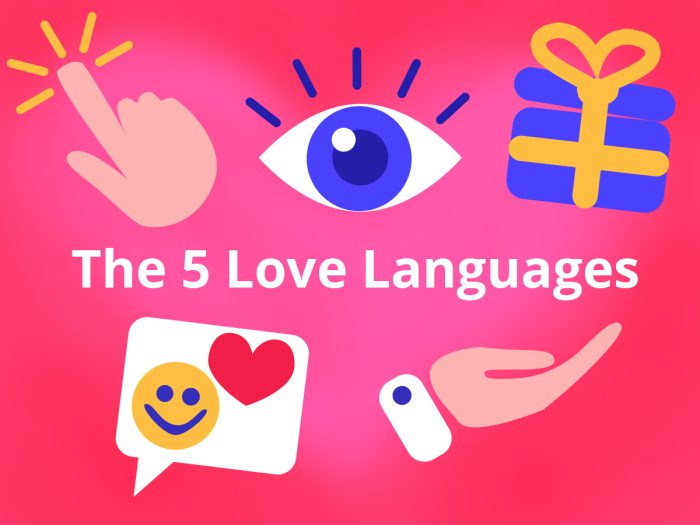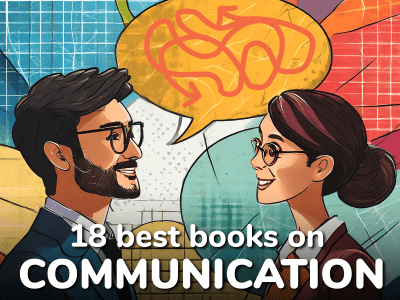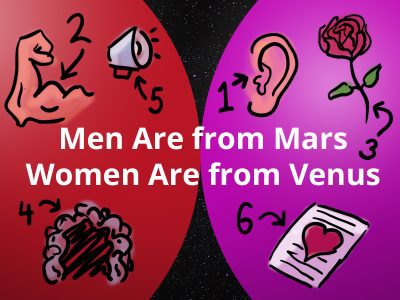Over 17 million people have bought this book—The 5 Love Languages! But if you think about it, that’s really no surprise. Because when it comes to relationships, almost ALL of us have burning questions like:
- How can I keep my partner feeling loved?
- How can I make our relationship feel more secure?
- How can our marriage remain as joyful as it was in the beginning?
Many books have been written on love and romance—but the problem is, their advice was usually “one-size-fits-all.” The 5 Love Languages is different because it says the secret to making love last is to truly understand our partner and personalize the way we express our love to them. I think most people will finish this book with at least two VERY useful ideas about how to better connect with their partner! So let’s begin!
Who is Gary Chapman?
Gary Chapman (official website) is a marriage counsellor and pastor with over 40 years of experience. He’s also a bestselling author, with a radio show that is broadcast nationally on relationship advice. And he’s been married to his wife for over 45 years.
1. Personalize Your Love: Chapman discovered that everyone feels loved in 1 of 5 different ways
Over his long career in marriage counselling, after talking to hundreds of couples struggling with relationship difficulties, Gary Chapman had a stunning idea. That idea is that everybody has a different way they feel loved.
So if we want to show someone love, then we must learn what their personal “Love Language” is. (And if we want to feel loved, then we must communicate what our own “Love Language” is to our partner too!)
There are 5 of these languages:
- Words. This means speaking verbal words of praise, appreciation, encouragement, compliments, etc. An important part is using a kind and gentle tone of voice. (Here’s a great list of 100 compliments to give you some ideas, from Happier.com)
- Time. This means providing our undivided attention, listening actively, with eye contact, doing regular activities together, making an effort to know and understand them.
- Gifts. This means giving gifts, whether something purchased or handmade. It shows you were thinking about them, and gifts are actually part of the romantic process in every human culture.
- Service. This means doing things for them. Many of the examples in the book were of chores around the house such as cooking a meal, cleaning the dishes, etc.
- Touch. This means physical contact, anything from light touches while walking by, to holding hands, hugging, a back rub, making love, etc.
So those are the 5 Love Languages. Pretty simple, right? But don’t let the simplicity fool you! Many people who reviewed this book online said the basic idea was life-changing to them. For example, I read one woman on Amazon.com who said she had always expressed her love by providing service and doing things for others, because that is what made her feel loved. But she never stopped to think the other person may feel loved in a different way, such as by receiving gifts. And that’s why we need to discover the Love Language of ourself and others to express love effectively.
One of the most popular relationship books ever iss Men Are From Mars, Women Are From Venus. In it, the author John Gray echoes a similar idea by writing, “You cannot, nor should you ever try to, change your partner. That is his or her job. Your job is to change the ways you communicate, react, and respond to your partner.”
Read more in Men Are From Mars, Women Are From Venus by John Gray
Most relationship advice assumes everybody is the same, but Gary Chapman says there are 5 different ways that people can feel loved. These 5 Love Languages are: words, time, gifts, service, and touch. To help our partner feel loved, we need to “speak” their primary Love Language.
2. Understand Your Partner: To find someone’s preferred type of love, just look at their actions
So how do you determine what someone’s primary love language is? The most important thing to remember is that it’s not rocket science! To understand how someone would like to be treated, you simply have to pay attention to their current actions and reactions:
- How do they express love? Most people tend to express love in the ways they feel loved, usually not realizing the actions may not have the same effect for others. For example, someone who feels loved through words will probably give their partner plenty of praise and compliments.
- What do they ask for? What we request most often tends to reflect our primary love language. Someone who feels loved through service may often ask their partner to do things around the house.
- What hurts them most? On the other hand, going against someone’s primary love language will hurt them especially deeply. For example, someone who feels loved through spending time together will be most hurt by someone’s absence or neglect.
So the first practical step to use this information is by finding out our own primary language of love. Begin with asking yourself: How do I show others love?
Finding out your personal love language should be fairly easy, because we are all most familiar with our own feelings! So ask yourself: How do you show others love? What do you ask for? When do you feel most hurt? Your answers will reveal your preferred type of love. And then you’ll know what to say to guide your partner in making you feel loved.
One of the most respected experts on relationships is John Gottman, a psychology researcher and professor who is famous for being able to predict divorce with 90% accuracy rate. His most popular book is called The 7 Principles of Making Marriage Work.
His first principle is that in great marriages both spouses carry a detailed mental “Love Map” of each other. This means they take the time and energy to understand their partner deeply, including their likes, dislikes, hopes, fears, etc. So when you and your partner get to know each other’s Love Languages, then you are also creating more detailed Love Maps of each other!
Learn more in Gottman’s book The 7 Principles of Making Marriage Work
Understanding someone’s Love Language, whether your own or your partner’s, is usually quite simple. Just ask these 3 questions: How do they show love to others? What do they ask for? When do they seem to feel most hurt?
3. Choose to Love: After the emotional high of “falling in love,” we must make an effort to love
When most of us “fall in love,” we’re on an incredible emotional high. Some people get married while on this high, but a couple years later that feeling seems to fade.
Chapman believes the “falling in love” feeling always fades (Healthline.com), so if we want our relationship to remain joyful and alive, then love must transform into a voluntary choice. We choose to give our partner love, according to the way they feel loved, because we love them. And vice versa, of course.
Here are a few pointers:
- Keep their emotional tank filled. Imagine the people you love (spouse, kids, etc.) having an inner gas tank that gets filled when you give them their preferred type of love. It’s an emotional reserve that allows the relationship to withstand many bumps and problems. But when the tank is empty, even minor disagreements quickly spiral into major conflict.
(Many self-help books share a similar idea under different names. For example, the book The 7 Habits of Highly Effective People says we should imagine all of our relationships having an “Emotional Bank Account.” When we are kind, considerate and dependable, then we make “deposits” into this account, which makes the relationship stronger. Choose whichever analogy works best for you!) - Do things that are uncomfortable. It’s rare that our primary type of love matches our partners, and that means we may feel discomfort trying to express love in a way that does not come naturally to us. Chapman’s advice here is basically to get over it, as he got over his dislike of vacuuming the house, because it’s an action that makes his wife feel very loved.
- Inspire love with kindness and goodness. What if your relationship has deteriorated to the point you both dislike each other, but you still want to save it? While you can’t control the other person, by acting towards them with love, you may sometimes inspire them to begin acting with love, too. In one story, a woman was able to save her marriage, but with great difficulty, by following the words of Jesus “Do good to those who hate you.” (BibleGateway.com)
The feeling of “falling in love” is temporary, so to make love last we must choose to love our partner based on their Love Language. Even if something does not come naturally to you, you can choose to do it because that is how your partner feels loved, and it keeps their “Emotional Tank” filled.
4. Communicate Your Needs: Love must be given freely, based on requests and not demands
When we feel unloved, it’s easy to feel hurt and then attack our partner with demands, complaints and criticism.
However, many times a person may be completely ignorant to how they are making their partner feel unloved. For example, if one person feels loved through touch, they may feel that gifts are just a waste of money. And without bad intentions, they may neglect to provide their partner with the type of love they need for years!
You can and should let your partner know how you prefer to be loved. But the way to do it is not with complaints or ultimatums, but with requests.
Another book called Nonviolent Communication explains exactly the same idea of making requests, not demands. The psychologist Marshall Rosenberg says we can communicate both hurtfully and ineffectively when we use demands, telling others they should or they must or they are supposed to do something. For example, “You need to take out the garbage. I’ve already told you 3 times!”
On the other hand, we can speak with compassion and effectiveness by making requests in our relationships. Requests acknowledge the other person has a choice in whether to fulfill our desire or not. We will not punish them for not complying. But our request communicates a way they can express their love to us. For example, saying one time “Can you take out the garbage for me?” or “I’d really appreciate if you took out the garbage.”
To get our needs for love met, we should tell our partner what makes us feel loved. But if we do this through complaints or demands, then we cause hurt and resentment. Instead, we can make requests, which acknowledge they have a free choice whether to fulfill our request or not.
- Write down 3 ways you have tried to show love in the past. This will give you a strong hint about your own love language, but it can also reveal why your efforts at love may have missed in the past. Perhaps you were not aware the other person’s love language was different.
- Imagine your perfect partner, then write 3 ways they would show love to you. What would they do that would make you feel absolutely loved, secure, appreciated and respected? No limits to your imagination here. You can also ask your partner this question. It comes from Chapman’s counselling stories.
- Ask your partner for 3 requests. What would they like for you to do, that would make them feel loved? This could include doing the dishes, going for a weekend trip, buying them tickets to a sports game. To bring joy back into a relationship, one partner usually needs to go first and begin speaking the other’s love language. That could be you!














Community Notes